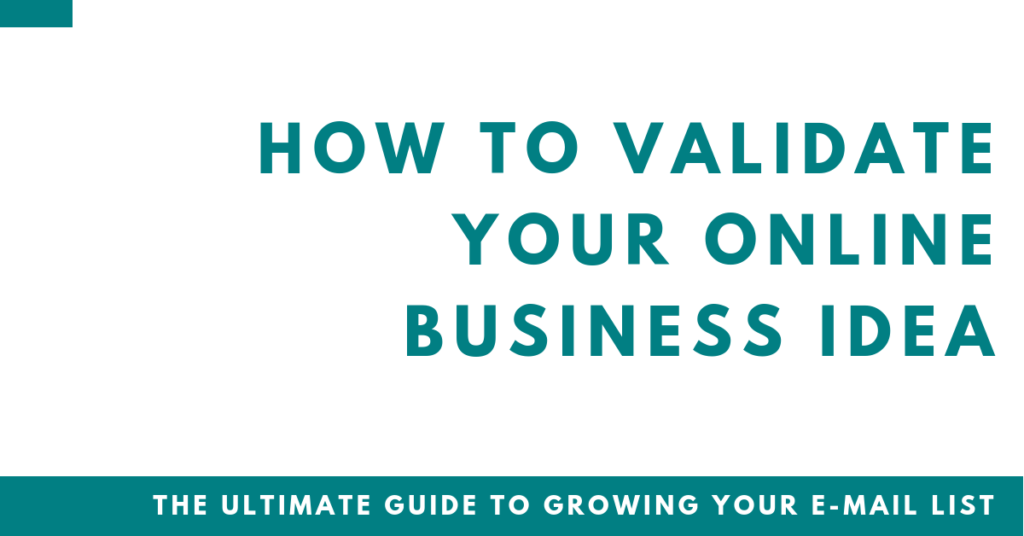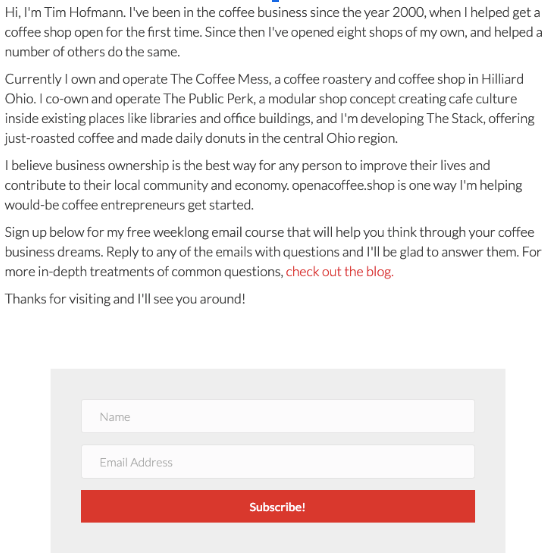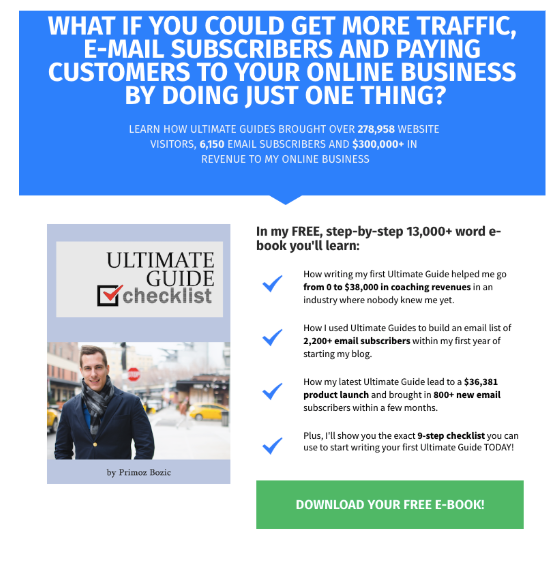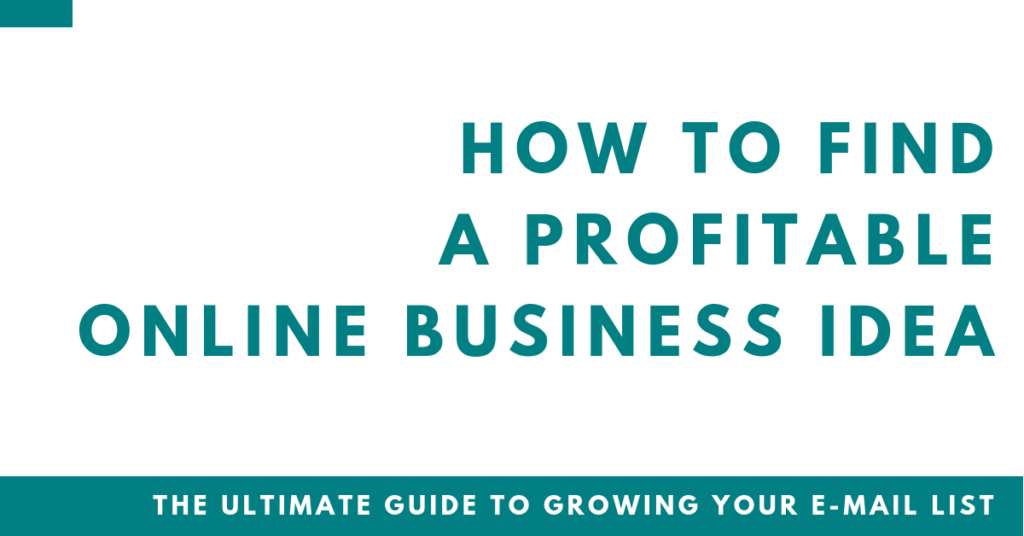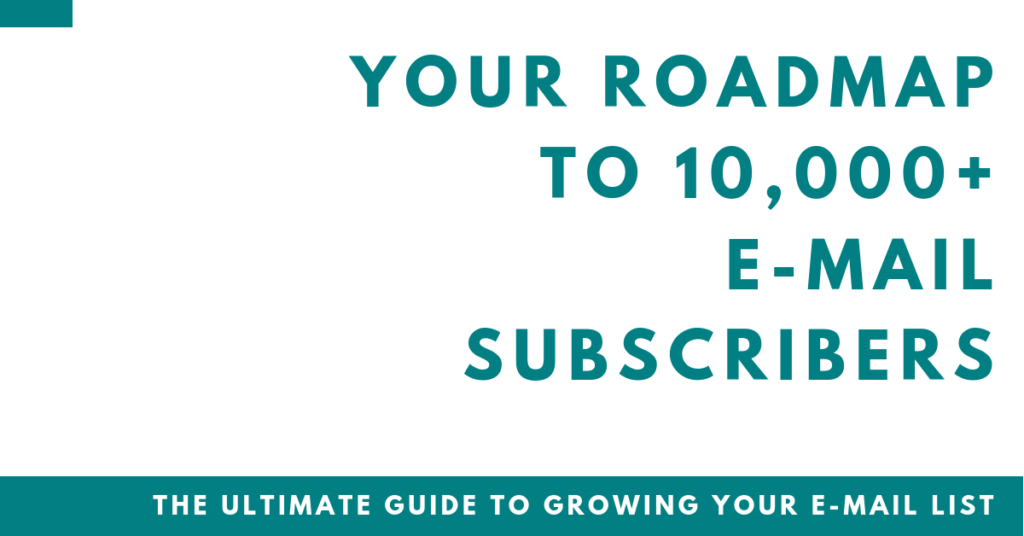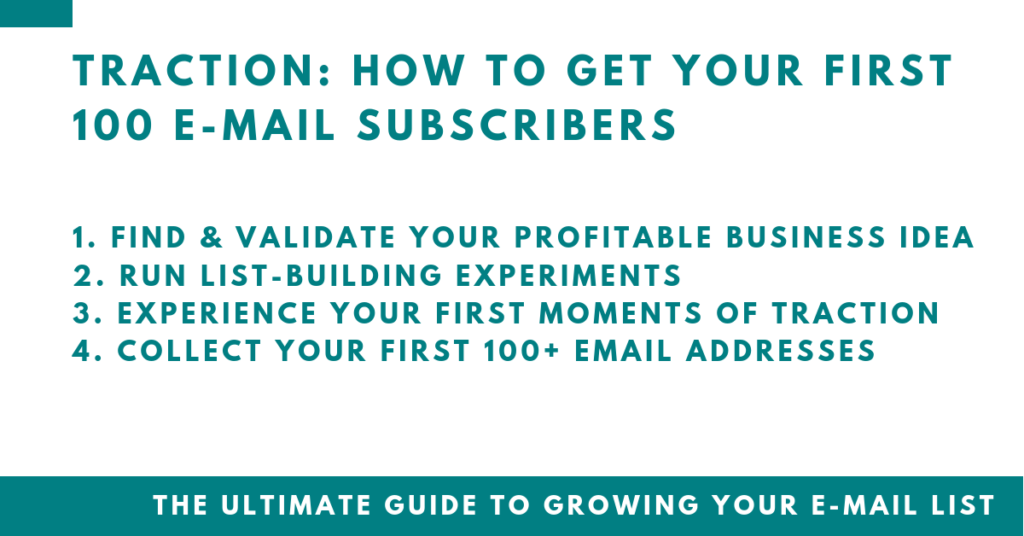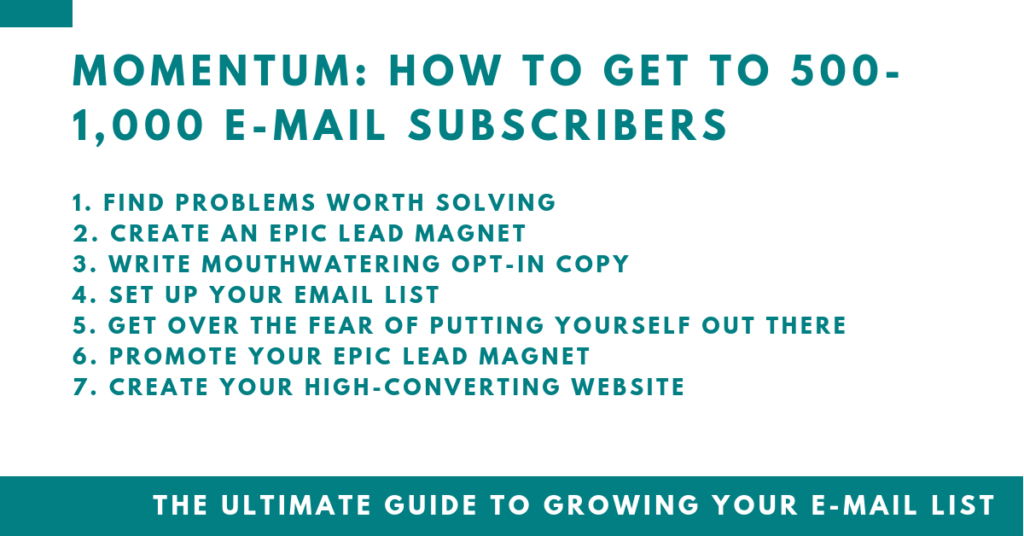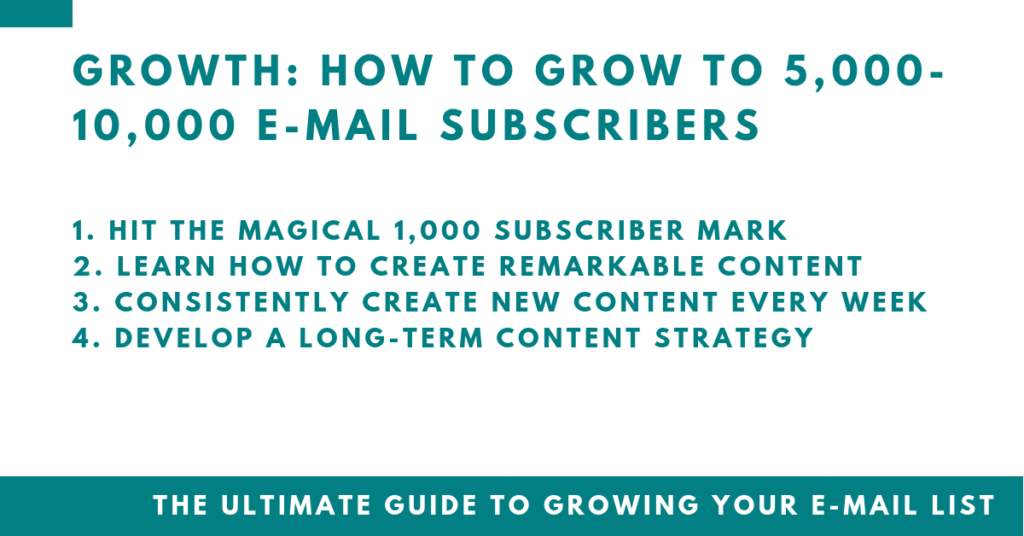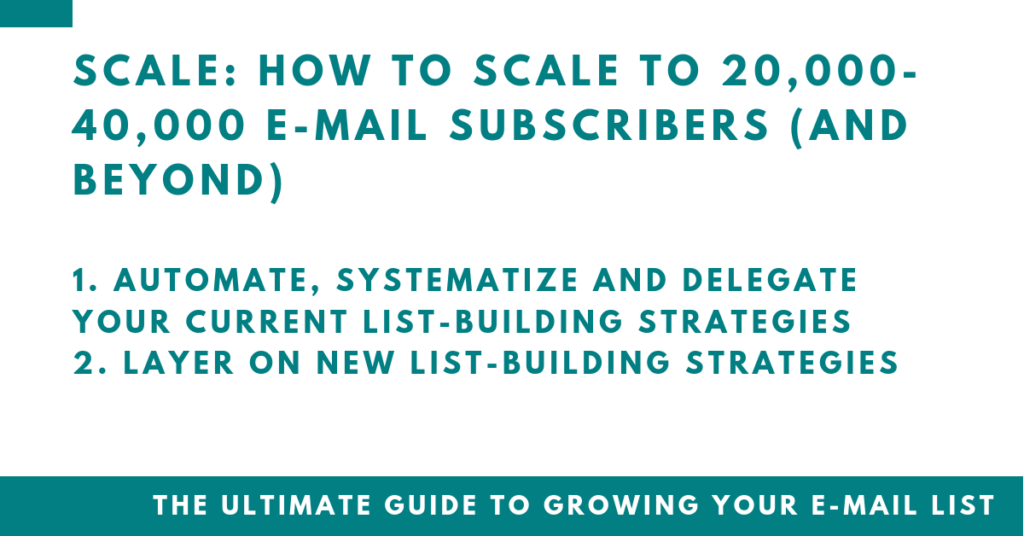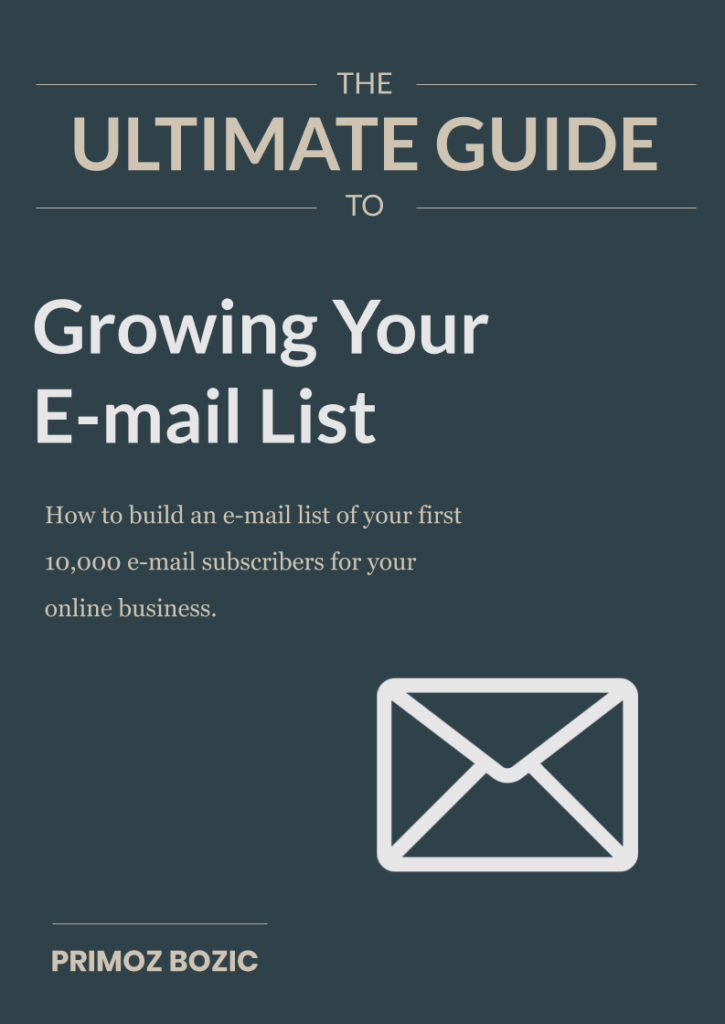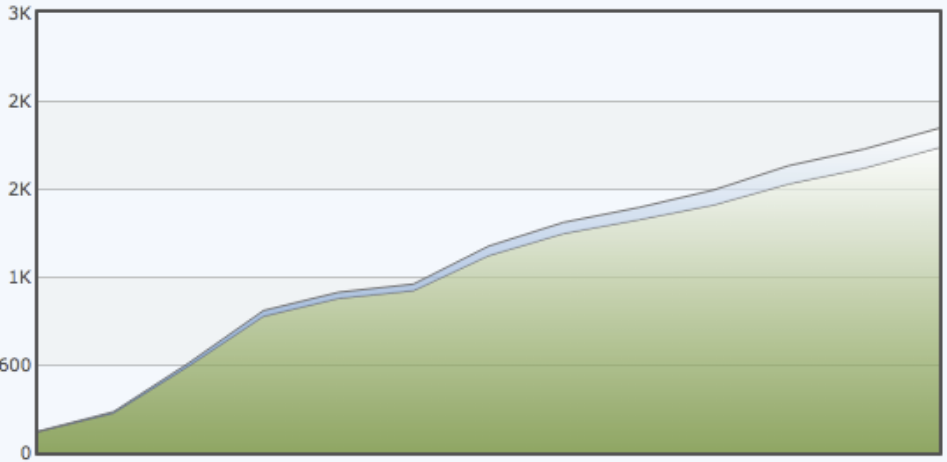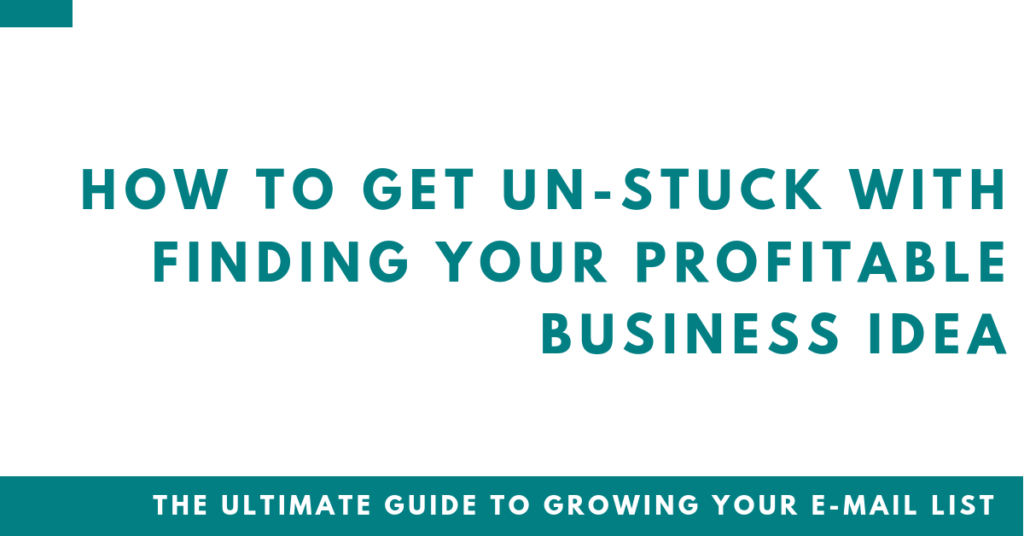
You’re currently reading Chapter 4 of The Ultimate Guide to Growing Your E-mail List.
In the previous chapters of this guide, I summarized how to find and validate your business idea and get your first 100 e-mail subscribers in a way that’s as simple as possible to understand and follow.
However, there’s so much more I have to say on this topic (and a lot of questions that you might have about this stage of building your e-mail list).
That’s why I created a chapter that will help you get un-stuck with finding and validating your online business idea.
Let’s dive in!
“Do I Need a Clear Target Audience For my Online Business Idea?”
The answer to this question is “it depends”.
A lot of experts say that you need an ultra-specific target audience or an “ideal client profile” in order to build a successful online business.
You need to know the gender of your audience, how old are they, where they live, what they do for a living, how much they earn, and how many pets they have.
But my personal experience and all the interviews I did for this guide tell a different story.
When I asked fellow entrepreneurs how they came up with their business ideas, very few of them talked about having an ultra-specific audience in mind. And even the ones that did didn’t really have clearly defined customer demographics.
Here are some examples of how specific the audiences were:
- Nagina Abdullah: Ambitious, busy women who want to lose weight
- Rusty Gray: People who want to animate for a living
- Karen Dudek-Brannan: Speech pathologists
- Gabriela Pereira: Writers who want to get better at writing without getting a degree
- Sam Gavis-Hughson: People that want to have a coding interview coming up in the next few months
- Danny Margulies: People that want to become a freelance copywriter
- Jenni Waldrop: People that want to grow their Etsy businesses
- Will Darling: People that want to learn how to mix EDM music
- Luke McIntosh: People that want to become better bassists
- Ryan Hildebrandt: People that want to speak at TEDx events
- Christina Rebuffet: Business people that want to speak fluent American English
- Geraldine Lepere: English-speaking people who want to speak French
Of course these might be slightly oversimplified and they might have a clearer idea who their best clients are (something we’ll talk about further on in this guide), but in general, it wasn’t super-detailed demographics or ideal client profiles that would help them build e-mail lists of thousands of people.
Instead, what mattered a lot more was defining their target audience or the problem they are solving clearly and succinctly.
Learn how to speak at a TEDx event. Learn how to animate for a living. Learn how to speak fluent American English. Learn how to grow your Etsy business. Learn how to produce EDM music. Learn how to play bass guitar.
No fancy target audience, just a clear business idea – that’s what you need at this stage of starting your online business.
The exception here (and the reason why I said “it depends” in the beginning of my answer) is when you’re pursuing a business idea in a highly-competitive field. That’s when having a clear and specific audience is important.
Now that doesn’t mean that you need to have an endless list of customer demographics ready. Quite the opposite.
It does mean though that you shouldn’t just target “people”, you should target a specific audience that you can describe in a handful of words.
A great example for this is my friend Kim Nicol – she started her business by teaching mindfulness to lawyers (and later on moved to start-ups). That’s a lot more specific than teaching mindfulness to everyone.
Peter Nguyen is a stylist for guys who work at tech companies (not just a stylist for everyone).
And Sam Gavis-Hughson helps you ace your coding interview at top tech companies (not any job interview in any industry).
Having a specific audience in mind can definitely help you stand out in a crowded market, but you definitely don’t need to know how many pets your “ideal client” has, especially when you’re at this early of a stage of building an online business.
You won’t test your idea by saying “are there any 35-45 year old entrepreneurs with 2 kids who make $100-$150k/year and want to speak at a TEDx event out there?”.
Instead, you’ll ask “does anyone want to learn how to speak at TEDx events?”. Then you’ll see who responds. You’ll see who buys your products and services. You’ll see who your best clients are. THEN you’ll define clearer and clearer customer demographics.
“When do You Have a “Good Enough” Business Idea, When Should You Refine it More, and When Should You Move on to a New Idea?”
One of my readers, Stephanie, asked “when do I know that my business idea is a good idea, when does it need more refining, and when should I move on to a new idea?”.
The first answer is simple: Your idea is good enough when you see enough traction to build an e-mail list of 100+ e-mail subscribers within 1-2 weeks.
If you’re not even close to that, if you keep testing your idea and fail to see any moments of traction, then you should either tweak your business idea or move on to a new one.
The second part of this question is a bit trickier.
Personally, I’d give each of my business ideas a maximum of a month to see traction. If there’s no traction, I’d move on to a new idea.
During this month, I’d go all out on this idea, keep tweaking it and test different angles. But if I already ran tens of different List-Building Experiments and I just can’t seem to find traction, it’s unlikely that my idea will magically gain traction over-night. It’s a lot more likely that I’ll get stuck in the List-Building Rat Race.
If you’ve already spent months trying to make the same business idea work, I don’t believe that “making small tweaks” will make it a Profitable Business Idea overnight – I’ve just VERY rarely seen it happen, but I’ve seen people stuck on 14 e-mail subscribers for months because they were reluctant to try out different business ideas.
If your idea just isn’t picking up any traction, I suggest one of the following:
- Simplify your idea. Make it so simple that people can understand it in a split second. “Do you want to learn how to speak at a TEDx event?”
- Choose a more specific audience. “Do any lawyers want to learn how to be less stressed out or burned out?”
- Choose a more specific problem. “Do you want to learn how to become an Early Riser?”
These are usually the best ways to pivot your idea, and you can cycle through different problems / audiences very quickly to see one that picks up traction.
Remember, when you see a Profitable Business Idea, you’ll know it.
Here’s a great example that happened this Thursday. I was coaching one of my clients, and she was frustrated that her idea wasn’t picking up any traction. I walked her through the framework from this chapter of the guide, and helped her brainstorm some new Profitable Business Ideas.
She off-handedly mentioned something about “designing e-books in Google Documents”, and another one of my clients interrupted the conversation and said “I’d buy that for my assistant in an instant. I’d happily pay $300 if you can teach her how to do it”.
As we started talking about the idea more and more, we helped her clarify it into “Teaching assistants of online entrepreneurs design beautiful e-books and worksheets in Google Docs”, and I got excited about the idea as well, and said “I want that for my assistant as well!”.
It was magical. My client went from an idea to 2 paying customers in a matter of minutes. That’s when you know you have a Profitable Business Idea.
“What if I can’t find a Profitable Business Idea after months of trying to grow my E-mail list”?
If you keep running List-Building Experiments on different business ideas and none of them seem to pick up traction, there’s a few things you can do:
- Get good at a valuable skill: Instead of asking yourself “which existing skill can I build a business about”, you can learn new, valuable skills that you can then build a business around (for example, if I noticed that people want to learn how to create online course, I could get good at creating them, then try to build a business around it).
- Find existing traction: You can go into online forums and communities and find questions that are ALREADY getting a lot of traction. For example, if you found a reddit thread that has 1,000+ comments, that might be a big problem that people have that could be worth solving.
- Try something completely different: My friend Naveen Dittakavi from NextVacay started out with a business idea to import BMWs from Europe to the US, which never really took off. He then built a very profitable business around teaching software engineers how to build recurring revenue, and an even bigger business around finding flight deals (NextVacay).
If your idea just doesn’t take off after months and months of work, trying something completely different will likely be better than doing what you’ve been doing before.
“Should I pick an idea that I’m more excited about, or an idea that there’s a lot of demand for?”
Whenever I work on a business idea, I make sure that it’s an idea that:
- I’m an expert at
- I can talk about for hours on end
- There’s a lot of demand for
If I pick an idea that I’m not an expert at, I’ll experience a lot of imposter syndrome (“I’m not good enough”).
If I pick an idea that doesn’t excite me, I’ll get bored quickly and won’t work on it as hard as I would want to.
If I pick an idea that there isn’t enough demand for, I won’t get enough traction with my idea.
Now if I have two ideas that tick all of the above boxes and one of them is more exciting and the other one seems more profitable, I’ll personally pick an idea that’s more exciting to me (as having fun with my business is more important to me than making the most money possible).
Think about what’s more important to you – is it making money or having fun? And choose the option that suits you best.
If you’re just not sure, you can do a 1-month trial.
Try working on an idea for a month, and go all out on it. If you love it and you see traction with it, keep going. If not, switch to a different idea.
“How Much Customer Research do I Need to do Before I Validate my Idea?”
Doing customer research is extremely important when you try to create new blog posts, e-books or online courses in your business.
But to get to your first 100 e-mail subscribers, you don’t need to spend tens of hours on customer research. You don’t need to do a lot of research to ask “Would you like to learn about how to speak at a TEDx event?”.
You’d be better off testing different ideas to find traction, and then, ONCE you have 100 e-mail subscribers, simply do all the customer research with those 100 e-mail subscribers.
“What if I don’t have anything unique to offer?”
Watch this amazing video from Michael Ellsberg, it might spark some ideas:
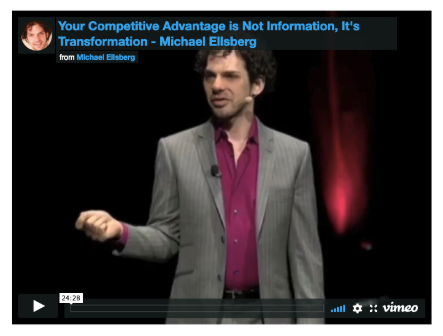
And if that’s not enough, try out my 9 ways to find a profitable online business idea – you’re bound to come up with some new ideas that you can validate!
“Can I get good at something and share my personal journey as my business idea?”
Here’s a question I got from one of my readers of this guide:
“Hi Primoz, I have been stuck with my business for more than 2 years for various reasons. I have tried blogging on a few different topics in the last 2+ years.
My biggest challenge is that my 10+ years of experience has been with Oracle databases. But I somehow lost interest in pursuing the same career in database engineering, which brings me to my biggest challenge.
I have tried blogging on topics like data science, fitness, and parenting.
Since I am not an expert in any of these topics, it is always in the back of my mind holding me back. I am thinking “Okay, let me go through a personal transformation and share it on my blog first. And then use that as a starting point for my business.”
But I have failed miserably so far with this strategy. As you know, personal transformation is not easy. Otherwise everyone will do it.
What am I doing wrongly here?”
It breaks my heart when I hear stories like these. I see so many people who keep trying and trying to build an online business for YEARS, without seeing any traction at all.
To avoid being in a scenario like this (or to get out of it), you should always validate your business ideas and try to see enough traction with your ideas in 1-2 weeks to get to your first 100 e-mail subscribers.
Even if you tested 10 different business ideas that way, it would still take you only 10 weeks to test them, which is a lot less than 2 years.
The big mistake you can make here is to keep going with your idea even if there’s no traction, which will lead to a situation like this in 99% of the cases.
Ok, onwards to answer the question of “can I go through a personal transformation, share it on my blog, and then build a business around it?”
The answer is yes and no.
Let’s first look at the data. How many of the entrepreneurs that I interviewed for this guide followed this approach?
Zero.
Everyone that I interviewed was already fairly good / amazing at the topic they built an online business around, which makes sense to me (if you want to open a restaurant, you should be a good chef already).
While there MIGHT be entrepreneurs who followed that approach, they’re outliers, unicorns, and exceptions to the rule.
CAN that approach work? It can, but it’s a gamble.
The problem with that approach is that if you DON’T see any traction before you put years into getting good at something, your idea might never take off. And as my reader said, “getting good at something” isn’t necessarily easy either.
Sure, there are viral videos out there like this 10-year singing transformation.
But those videos usually become viral AFTER the 10 years of effort, and 99% of them might still never get noticed.
The bigger problem however is that if you try to get good at something JUST to build a business around it, that might not motivate you enough to actually do it.
The “personal transformation journeys” businesses usually don’t start out as business ideas. They’re stories of hobbies that people used to blog about, then someday took off. They were never intended to be businesses, the business/virality was usually accidental.
You probably won’t become a great singer in 2 years if you just want to build a business around it. You’ll become a great singer if you really want to learn how to sing.
Based on the data, I can’t recommend “going on a personal transformation and documenting your journey” as a solid strategy for building a business. The success stories for that strategy are few and far in-between, and the idea validation process is just way too stretched out.
So if that’s not a solid approach, what CAN you do if you are an expert in only one area that you don’t want to talk about any more?
My recommendation is to get good at something first, and THEN, MAYBE build a business around it.
If you can’t find a profitable business idea that:
- You ARE an expert in already
- You CAN talk about for hours on end
- There IS demand for
Then take a break from building an online business. Instead, go and explore life. Get good at something BECAUSE you want to get good at it, not because you want to build a business around it.
If you want to blog about it, by all means do it (but know that chances of success are slim). Though perhaps it might be more fun not to worry about blogging at all.
Then, once you do, in a year or two, revisit the subject on building an online business, and see if there’s something there. Maybe you’ll see the online business world in a different way.
Or maybe, you’ll one day come up with an idea that you ARE an expert in, you CAN talk about for hours on end, and there IS demand for out of thin air, test it, and it will take off.
But at least you won’t spend another 2 years frustrated and spinning your wheels. You’ll spend the 2 years living your life and doing things you love.
Continue to Chapter 5: How to Find Problems Worth Solving
Your turn: What other questions do you have about finding or validating your online business idea, finding your first moments of traction or getting to your 100 e-mail subscribers? Let me know in the comments below!
Are you ready to build an e-mail list of 1,000+ BUYERS?

Download the full 393-page PDF version of this EPIC list-building guide, to print it out or read it on the go!
